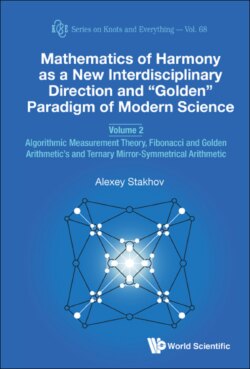Читать книгу Mathematics of Harmony as a New Interdisciplinary Direction and “Golden” Paradigm of Modern Science - Alexey Stakhov - Страница 27
На сайте Литреса книга снята с продажи.
1.9.3. Special cases of the optimal (n, k, 0)-algorithm
ОглавлениеLet’s consider the particular extreme cases of the optimal (n, k, 0)-algorithm. Let n = 1. In this case, the formula (1.22) reduces to (1.21), and the optimal (1, k, 0)-algorithm reduces to the readout algorithm (Fig. 1.7).
For the case of k = 1, the formula (1.22) reduces to the formula F(n, 1) = 2n, which sets the value of (n, 1)-exactness of the “binary” algorithm, i.e., the “binary” algorithm, considered above (Fig. 1.6), is the extreme particular case of the optimal (n, k, 0)-algorithm.
